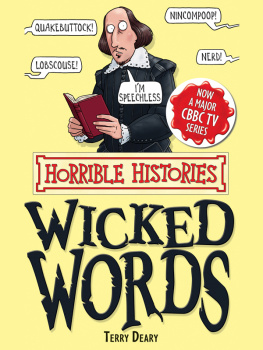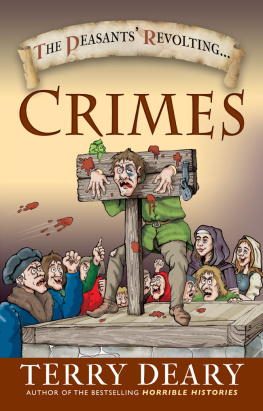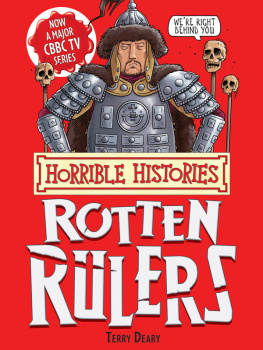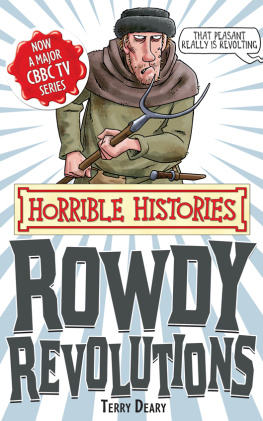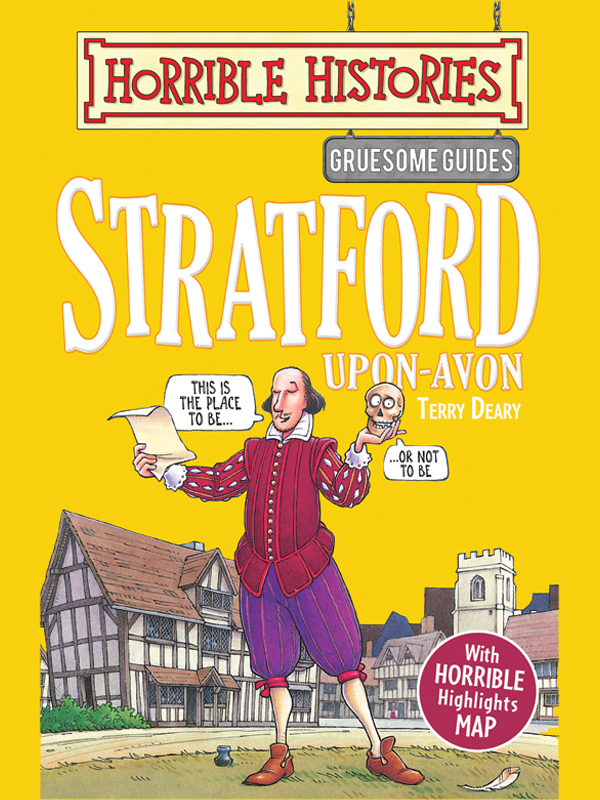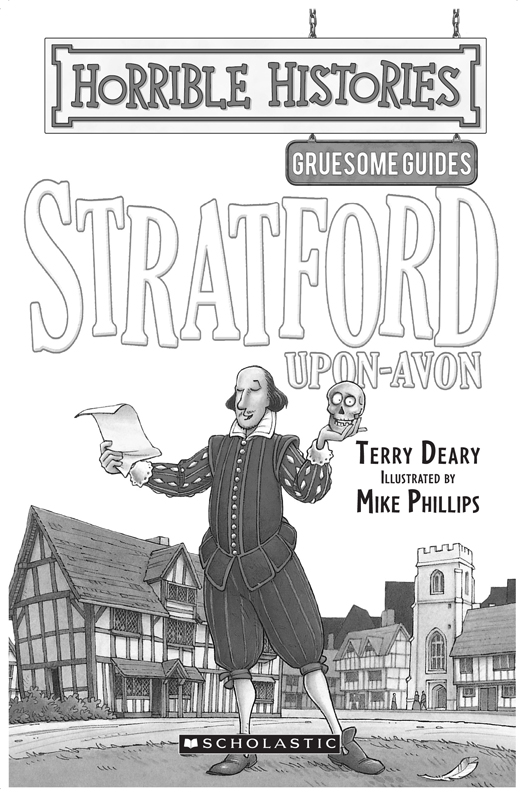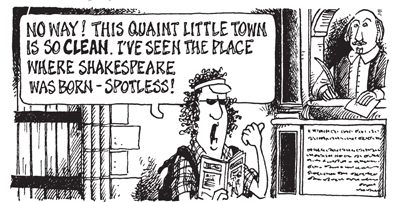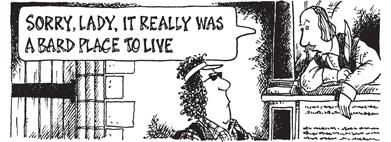Stratford.
Its full name is Stratford-upon-Avon because it is built on the banks of the river Avon, not on the river.
This cute little town is famous for one thing: the writer William Shakespeare was born there. He went off to London to be famous but he returned to Stratford to die
Nowadays Stratford is pretty and quiet, but when Will lived here it wasnt so quaint. The truth is life in those days was grim. One person in three lived in poverty. If the poverty didnt get you then dirty water might. If you survived street fights then you might not survive bites from the fleas that carried the plague.
If you go to Stratford today youll see the way it NEVER was in Tudor times. Youll see a bit of a fib.
What you need is a book that tells you the terrible truth of what REALLY went on in Stratfords grubby and violent past.
You need a horrible history of Stratford.
Well, dear reader, as it happens you have one in your sweaty little hand. Youve opened it now. So I hope youve paid for it!
Stratford timeline
BC-AD The Romans come, they see, they conquer. They also give the place a name they call it Street-ford and a ford is a place where you can cross a river. The river is the Avon so the place becomes Street-ford upon Avon.
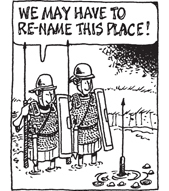
There is a Saxon monastery in Stratford (around where Holy Trinity Church is today). By the time the Normans arrive in 1066 it has gone, but the old town is built around the church that is left.
1086 The Normans come to count the Stratford homes for King Williams Domesday Book. There are just 29 houses, but lots of sheep.
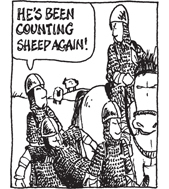
1196 The Forest of Arden, next to Stratford, is being cleared. Richard I allows a new market to be built and a new town springs up. The New Stratford people have to worship in the Old Stratford church. They are not happy. Old and new dont get on. The town is now up to 40 houses.
1490 Rich Sir Hugh Clopton pays to have a bridge built over the Avon. No need to ford the river now. Maybe they should change the name to Strat-bridge. They dont.
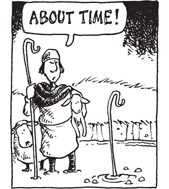
1564 The plague comes to Stratford and kills many. But baby Will Shakespeare, born on 23 April, survives
1616 Then, on 23 April 1616, Shakespeare dies.
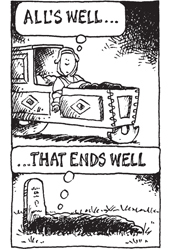
1643 In the English Civil War the Roundheads take Stratford. They store their gunpowder in the Market Hall until it explodes. They also damage Clopton Bridge.
1645 That purple-spotted plague is back to make Stratford suffer again. And the rats die in their thousands too. Ahhhh!
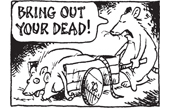
1760s People start to get interested in Shakespeare and Stratford becomes a centre for tourists. Stratford starts to get interested in making money from tourists.
1892 A famous painting of Shakespeare is discovered by Sir Desmond Flower and loaned to the Royal Shakespeare Theatre Company. So THATS what Shakespeare looked like! Er, no. We now know its a fake, painted around 1830.

2001 The people of Stratford are upset. Tourist buses are going round the town non-stop and passengers are peering in their windows. The locals win and there are fewer buses.
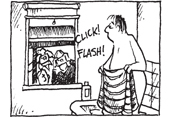
Medieval mayhem
In the Middle Ages, Stratford was a quiet little village, but nearby there were bloody battles and beheadings
Simon de Montfort (120865), Earl of Leicester
Simon was a rebel baron. He told King Henry III

De Montfort took the King and Prince Edward prisoner. But in 1265 Edward escaped and raised an army.
De Montfort decided to meet up with his son at Warwick, near Stratford, but Prince Ed got there first. He smashed the army of Simons son. (They were asleep in tents outside the castle at the time which was a dozy thing to do.)
Then Prince Edward caught up with de Montforts army at Evesham. He picked his twelve strongest knights and told them

De Montforts army was trapped in a loop of the river. His Welsh soldiers charged up the hill screaming a war cry they were battered by Prince Edwards army and ran back down the hill screaming, Help! I want to go home to Wales.
The Welsh ran away.
Simon told his men

They prayed. They charged. They were massacred. Even those Welsh soldiers were chopped down as they tried to run away.
De Montfort was killed with a lance in the throat. His body was hacked to pieces and bits of arms and legs sent all around the country. His body was buried at Evesham Abbey.
But his head was sent to Lady Mortimer, the wife of his killer.

Prince Ed, the Evesham winner, went on to be King Edward I and thats when he joined up with Guy de Beauchamp, tenth earl of Warwick (12781315).
Bloody Blacklow Hill
Good guy Guy de Beauchamp was a great soldier for King Edward I and a help in defeating the savage Scots. King Edward said


